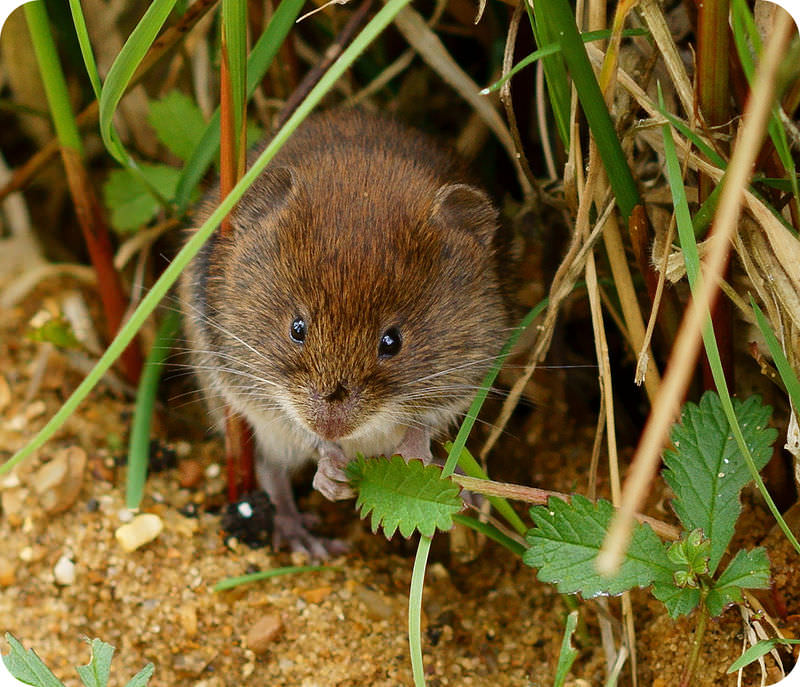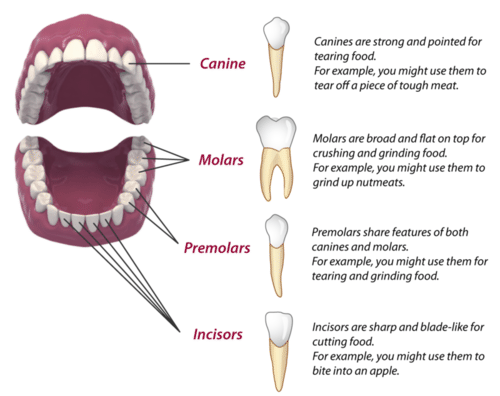12.25 哺乳动物结构和功能
章节大纲
-
Does this mammal breathe like all other mammals?
::这哺乳动物的呼吸像其他哺乳动物一样吗?Essentially, yes it does. A whale is a mammal , so it has a pair of lungs , not gills like . As shown here, whales take oxygen out of the air, not out of .
::鲸鱼是哺乳动物,所以它有肺部,不是象刺一样的刺。正如这里所示,鲸鱼从空气中取出氧气,而不是从空气中取出氧气。Eating and Digesting Food
::食食及食食食品Maintaining a high metabolic rate takes a lot of energy . The energy must come from food . Therefore, mammals need a nutritious and plentiful diet. The diets of mammals are diverse. Except for leaf litter and wood, almost any kind of organic matter may be eaten by mammals.
::保持高代谢率需要大量能量。 能量必须来自食物。 因此,哺乳动物需要营养丰富的饮食。 哺乳动物的饮食是多种多样的。 除了叶子和木柴,几乎所有类型的有机物质都可以被哺乳动物吃掉。Some mammals are strictly herbivores or strictly carnivores . However, most mammals will eat other foods if necessary. Some mammals are omnivores . They routinely eat a variety of both plant and foods. Most mammals also feed on a variety of other . The few exceptions include koalas, which feed only on eucalyptus plants, and giant pandas, which feed only on bamboo. Types of mammalian diets and examples of mammals that eat them are given in Table . How would you classify your own diet?
::有些哺乳动物严格是食草动物或食肉动物,但大多数哺乳动物必要时会食用其他食物。有些哺乳动物是食食食动物,经常食用各种植物和食物。大多数哺乳动物也食用其他各种植物和食物。少数例外包括仅食用食食食的考拉和只食用竹子的巨型熊猫。哺乳动物饮食类型和食食食它们的哺乳动物的例子在表格中列出。您如何分类自己的饮食?Type of Diet Foods Eaten Examples of Mammals with this Type of Diet herbivorous diet: plants leaves, grasses, shoots, , , tubers, seeds , nuts, fruits , bark , conifer needles , flowers rabbit, mouse, sea cow, horse, goat, elephant, zebra, giraffe, deer, elk, hippopotamus, kangaroo, monkey
::兔子、老鼠、海牛、马、山羊、大象、斑马、长颈鹿、鹿、鹿、驼鹿、河马、袋鼠、猴子carnivorous diet: animals other mammals, , , , fish, , worms, aardvark, anteater, whale, hyena, dog, jackal, dolphin, wolf, weasel, seal, walrus, cat, otter, mole
::aardvark, anteater, 鲸鱼, 土狼, 狗, jackal, 海豚, 狼, 黄鼠, 海豹, 海象, 海象, 猫, 水母, 摩尔omnivorous diet: plants and animals any of the foods eaten in herbivorous and carnivorous diets bear, badger, mongoose, fox, raccoon, human, rat, chimpanzee, pig
::熊、坏人、蒙古、狐狸、浣熊、人类、老鼠、黑猩猩、猪Different diets require different types of digestive systems. Mammals that eat a carnivorous diet generally have a relatively simple . Their food consists mainly of and fats that are easily and quickly digested. Herbivorous mammals, on the other hand, tend to have a more complicated digestive system. Complex plant such as cellulose are more difficult to digest. Some herbivores have more than one stomach . The stomachs store and slowly digest plant foods.
::不同的饮食需要不同类型的消化系统。 食食食食肉的哺乳动物通常有一个相对简单的饮食系统。 它们的食品主要由容易和迅速消化的脂肪组成。 另一方面,食草哺乳动物往往有一个更复杂的消化系统。 诸如纤维素等复杂的植物更难消化。 一些食草动物有一个以上的胃。 胃部储存和慢慢消化植物食品。Mammalian teeth are also important for digestion . Mammals have four different types of teeth. The teeth of other vertebrates , in contrast, are all alike. The four types of teeth are specialized for different feeding functions, as shown in Figure . Together, the four types of teeth can cut, tear, and grind food. This makes food easier and quicker to digest.
::哺乳动物的牙齿对消化也很重要,哺乳动物有四种不同的牙齿,而其他脊椎动物的牙齿则相同。四种牙齿专门用于不同的喂养功能,如图所示。四种牙齿合在一起,可以切裂、撕裂和研磨食物。这使得食物更容易和更快地消化。Mammalian Teeth (Human). With their different types of teeth, mammals can eat a wide range of foods.
::Mammalian Teeth(人类):哺乳动物可以使用不同种类的牙齿,食用各种各样的食物。Lungs and Heart of Mammals
::哺乳动物的肺和心脏Keeping the rate of metabolism high takes a constant and plentiful supply of oxygen. That’s because , which produces energy, requires oxygen. The lungs and heart of mammals are adapted to meet their oxygen needs.
::将新陈代谢率保持在高水平需要持续和充足的氧气供应。 这是因为能产生能量的氧气需要氧气。 哺乳动物的肺和心脏都适应了他们的氧气需求。The lungs of mammals are unique in having alveoli . These are tiny, sac-like structures. Each alveolus is surrounded by a network of very small (see Figure ). Because there are millions of alveoli in each lung, they greatly increase the surface area for gas exchange between the lungs and bloodstream. Human lungs, for example, contain about 300 million alveoli. They give the lungs a total surface area for gas exchange of up to 90 square meters (968 square feet). That’s about as much surface area as one side of a volleyball court!
::哺乳动物的肺部是拥有肺泡的独一无二的。这些肺部是微小的、类似于盐状的结构。每个肺部周围都是一个很小的网络(见图 ) 。 因为肺部有数百万个阿尔维奥利,它们大大增加了肺部和血液间气体交换的表面积。 比如,人类肺部包含大约3亿个阿尔维利。它们使肺部的总面积达到90平方米(968平方英尺)的气体交换面积。这相当于排球场的一面。Alveoli of Mammalian Lungs. Clusters of alveoli resemble tiny bunches of grapes. They are surrounded by many blood vessels for gas exchange.
::马马利亚肺部的 Alveoli 。 Alveoli 的团团和葡萄一样小。 它们周围有许多交换气体的血管。Mammals breathe with the help of a diaphragm . This is the large muscle that extends across the bottom of the chest below the lungs. When the diaphragm contracts, it increases the volume of the chest. This decreases pressure on the lungs and allows air to flow in. When the diaphragm relaxes, it decreases the volume of the chest. This increases pressure on the lungs and forces air out.
::哺乳动物在隔膜帮助下呼吸。 这是穿透肺下胸部底部的大肌肉。 当隔膜结合时, 它会增加胸部的体积。 这会降低肺部的压力, 并允许空气流动。 当隔膜放松时, 它会减少胸部的体积。 这会增加肺部的压力和气压。The four-chambered mammalian heart can pump in two different directions. The right side of the heart pumps blood to the lungs to pick up oxygen. The left side of the heart pumps blood containing oxygen to the rest of the body. Because of the dual pumping action of the heart, all of the blood going to body is rich in oxygen.
::四肢的哺乳动物心脏可以从两个不同方向抽动。心脏的右侧抽血到肺部取氧。心脏的左侧抽血到身体其他部位。由于心脏的双泵作用,所有流到身体的血液都含有丰富的氧气。The Mammalian Brain
::玛马利亚脑Of all vertebrates, mammals have the biggest and most complex brain for their body size (see Figure ). The front part of the brain, called the cerebrum , is especially large in mammals. This part of the brain controls functions such as memory and learning .
::在所有脊椎动物中,哺乳动物有着最大和最复杂的大脑体积(见图 ) 。 大脑的前部部分叫做脑部,在哺乳动物中特别大。 这部分大脑控制功能,比如记忆和学习。Vertebrate Brains. Vertebrate brains come in a range of sizes. Even the brains of mammals show a lot of variation in size. The area of the neocortex is greatest in humans.
::活性大脑。 活性大脑大小各异。 即使是哺乳动物的大脑也呈现出很大的体积变化。 新皮层的面积在人类中也是最大的。The brains of all mammals have a unique layer of nerve cells covering the cerebrum. This layer is called the neocortex (the pink region of the brains in Figure ). The neocortex plays an important role in many complex brain functions. In some mammals, such as rats, the neocortex is relatively smooth. In other mammals, especially humans, the neocortex has many folds. The folds increase the surface area of the neocortex. The larger this area is, the greater the mental abilities of an animal.
::所有哺乳动物的大脑都有一个独特的神经细胞层,覆盖大脑。这个层被称为新皮层(图中大脑的粉色区域)。新皮层在许多复杂的大脑功能中起着重要作用。在一些哺乳动物中,如大鼠,新皮层相对光滑。在其他哺乳动物中,特别是人类中,新皮层有许多折叠。这些折叠增加了新皮层的表面面积。这个区域越大,动物的智力能力就越大。Intelligence of Mammals
::哺乳动物的情报Mammals are very intelligent. Of all vertebrates, they are the animals that are most capable of learning. Mammalian offspring are fed and taken care of by their parents for a relatively long time. This gives them plenty of time to learn from their parents. By learning, they can benefit from the experiences of their elders. The ability to learn is the main reason that the large mammalian brain evolved. It’s also the primary reason for the success of mammals.
::哺乳动物非常聪明。在所有脊椎动物中,它们是最能够学习的动物。哺乳动物的后代由父母喂养和照料相当长的时间。这给了他们足够的时间向父母学习。通过学习,他们可以从长辈的经历中受益。学习能力是大型哺乳动物大脑进化的主要原因。这也是哺乳动物成功的主要原因。Summary
::摘要-
Mammals may be herbivores, carnivores, or omnivores. They have four types of teeth, so they can eat a wide range of foods.
::哺乳动物可以是食草动物、食肉动物或食肉动物。 它们有四种牙齿,因此可以食用多种食物。 -
Traits of the heart and lungs keep the cells of mammals well supplied with oxygen and nutrients.
::心脏和肺部的裂痕使哺乳动物细胞有足够的氧气和养分。 -
Mammals have a relatively large brain and a high level of intelligence.
::哺乳动物的大脑相对较大,智力水平也很高。
Review
::回顾-
Identify three mammals that are herbivores, three that are carnivores, and three that are omnivores.
::确定3个哺乳动物是食草动物,3个是食肉动物,3个是食草动物。 -
What are alveoli? What is their function?
::什么是代言人?他们有什么功能? -
Explain how mammalian teeth differ from the teeth of other vertebrates.
::解释哺乳动物的牙齿与其他脊椎动物的牙齿有何不同。 -
Compare and contrast the mammalian brain with the brains of other vertebrates. How is the brain of mammals related to their ability to learn?
::对比和对比哺乳动物的大脑和其他脊椎动物的大脑。哺乳动物的大脑与他们的学习能力有何关系?
-
Mammals may be herbivores, carnivores, or omnivores. They have four types of teeth, so they can eat a wide range of foods.






